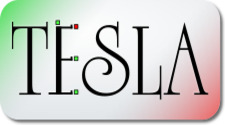
Version 2.2 of TESLA's decision support software, TESLA, has been released, introducing new features and improving quality, security and its future maintainability. The TESLA 2.2 Release Note describes changes in this version and the TESLA User Guide provides a comprehensive guide to its usage.
For over a decade, Quintessa have been using TESLA to assist our clients with decision support. Using an approach founded on Evidence Support Logic, we enable our clients to structure their thinking, document and justify their reasoning, and gain confidence that they are making good, robust decisions, even in the face of complexity and uncertainty. TESLA has been extensively applied to support decision making, particularly in the context of complex assessments involving uncertainty, such as those relating to performance of geological systems. For example:
- Shell have used it to assess the suitability of potential sites for storage of CO2 (Tucker et al, 2013); and
- TESLA has been used to assess the uncertainties associated with the estimation of geological uplift (Nakayasu, 2014 (Japanese)).
TESLA has also been used as a tool to help communicate assessments used in regulatory approval submissions, for example to the UK Government’s Department of Energy and Climate Change (DECC) concerning a sub-surface risk assessment for the White Rose CCS Project (Capture Power Limited et al., 2016).
Our experience with applying TESLA has led us to add new features to TESLA to improve how the flow of confidence can be modelled and visualised, culminating in this release of TESLA 2.2.
New Features in TESLA 2.2
- Confidence Flow Lines
- A feature that can be enabled to help visualise the flow of confidence for (green) and against (red) from the leaf hypotheses through to the root or primary hypothesis. The flow lines can help to identify which leaf hypotheses (and ultimately, evidence sources) are contributing (or not contributing) to the root hypothesis outcome and by how much. They can also be used to check the influence of logic on the propagation of confidence through the tree. See Figure 1.
- Symmetric Necessity Heuristic
- The idea behind the necessity heuristic is to limit the confidence values propagated to a parent hypothesis if a child hypothesis, referred to as the necessary hypothesis, fails a defined confidence test. The new symmetric necessity heuristic that been introduced with TESLA 2.2 can be applied equally to the propagation of confidence for or against. It is the default for all new trees.

Evaluation and Licensing
If you wish to evaluate TESLA, please download and install it. TESLA will operate in restricted mode until a licence is purchased. Please contact us if you would like to enquire about unlocking TESLA's full functionality or if you are interested in learning more about our decision support consultancy services.